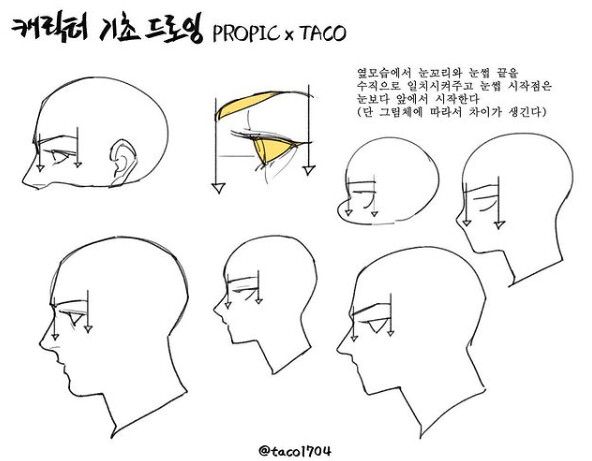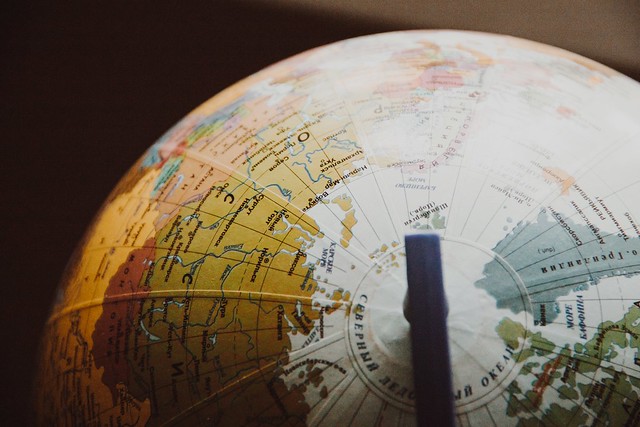Introduction
While the art community works hard to connect people from around the world and has succeeded in a variety of ways, artists still face challenges that make connection and even professionalism difficult. While there are a variety of challenges that arise in the art community, I would like to specifically talk about two that are of great significance: the disregard of copyright laws and cultural insensitivity.
While the art community thrives online and easily breaks language barriers through artwork, there is a widespread issue of people in the community sharing content from creators without permission and even plagiarizing such works as their own. In this vein of violating copyright laws, there is also the wide fan-production of illegally scanned and translated webtoons and manga that is provided freely on illegal websites. Readers access these sites to avoid paying for the works themselves, or in the case of publication restrictions, to read work that is only published in certain countries.
Due to the global reach that the art community has, artists have a plethora of opportunities to connect with people from a variety of countries and to encounter a multitude of cultures. While there is plenty of cultural growth within the art community, there are often issues of cultural appropriation. Many arts question what is the difference between cultural appreciation and cultural appropriation, and some lack any desire to understand the difference at all. This sort of cultural insensitivity leads to “drama” and instead of educating individuals, ends with cutting out these “problematic” artists from the community altogether which doesn’t help them change their behavior or mindset.
To better contrast these differences, I will illustrate the issues found on an international scale that can also be linked to some of the greatest opportunities that have come about as artists connect on an international scale.
Copyright
Artists from all around the world connect through social media platforms that allow users to find content that caters to interests. These interests lead to opportunities for building networks that transcend language barriers and cultural differences. The fact that the art community is essentially a visual community, this takes away issues like language barriers. For example, a tutorial written in Korean can still be used and practiced by someone who doesn’t read Korean, so long as the steps are illustrated in an efficient manner.
Photo by cottonbro from Pexels
However, on the opposite end of this spectrum of information sharing, there is the issue of plagiarism and abuse of copyright. While the internet has made it so much easier to connect with people around the world, it has also made it easier for people to take content, produce it on a different platform, and claim it as their own. Many artists make it a common warning in their profile biographies that they do not appreciate “reposting” with or without proper credit. Those who get caught doing such things, fortunately, do not escape unscathed. People in the community even slightly accused of plagiarism can be called out by their peers and followers of other creators in an attempt to call attention to an artist using unethical practices. This behavior often leads to cyberbullying towards the suspected plagiarist that usually ends with the user leaving the platform altogether or creating a new account under a completely different name. Artists have taken action to try and be informative of what plagiarism is and how to properly use a reference in your artwork to avoid this sort of issue (@sacredflamingheart, (2009).
Looking at the serial publishing aspects of this conversation, it’s common within the art community to come across illegally shared content that has been posted for the public to enjoy despite breaking copyright laws. An article published by Japan Today recently discussed the spike in piracy during the COVID-19 pandemic. Casey Baseel quoted a study conducted by a Japanese publishing group and wrote, “According to a study by Japanese publishing industry group ABJ (Authorized Books of Japan), the internet’s 10 largest manga piracy websites were accessed by users in Japan some 200 million times during December of 2020,” (Baseel, 2021). She also noted that while piracy is more of an overseas issue, advances in technology have made it easier for those residing in Japan to take more convenient methods even those these methods are illegal. Purchasing manga or webtoon episodes can be an expensive hobby for those overseas, but it’s a relatively inexpensive hobby in Japan. This just goes to show how big of a problem it is when illegal sites are preferred even when a low-cost (legal) option exists (Baseel, 2021).
Cultural Insensitivity
While artists thrive on social media platforms that allow them to easily connect with peers all over the world this exposure to other cultures can bring about both positive and negative impacts. On the positive side of the spectrum, artists can create friends from all parts of the world and learn about different cultures and art styles. On the negative side of this spectrum, however, there is cultural appropriation and the lack of respect given to cultures people don’t take the time to fully understand.
An article discussing the difference between cultural appreciation and cultural appropriation put it this way:
What is cultural appropriation, and how does it affect what artists make? As media becomes more and more diverse, the question comes up: who has the right to tell which stories? Can an author write a character that is a different ethnicity, or sexual orientation, or gender expression than they themselves are? Can artists depict cultures and experiences not their own?
The short answer is: of course. The fiction world and the art world would get terribly small very quickly (and the Science Fiction and Fantasy genre wouldn’t exist at all) if we could only create from what we ourselves experienced first-hand. Artists (whether of the writing kind, the painting kind, or any other kind) can’t be held to only depicting the experiences they have had first-hand and the cultures they themselves are from. This issue gets especially complicated in the world of fantasy — if a fantasy world is inspired by another culture, where is the line between appreciation and appropriation? Is a Magic: The Gathering set inspired by Ancient Egypt profiting off cultural appropriation? If I have an author who’s fantasy world is inspired by Native American culture, can I only commission a Native American artist to create the cover art? Can a concept artist lift ornamental designs from a Geisha costume from feudal Japan and apply it to their non-asian character design? These are all conversations I have had in the past year — and they are all complicated.
The short answer is: Yes, artists and writers are free — and encouraged— to explore themes from cultures not their own. But they can and should be held accountable for how they depict those cultures, bodies, and experiences. One of the most important steps an artist can take: Research & Respect your inspirations. The #1 thing you need to think about when you are considering depicting cultures and experiences foreign to you is this: Am I showing respect to this person or culture by doing the proper research into the origins of the cultural elements I want to bring into my art? Am I showing disrespect for the things I am using because I don’t know the history of how they were originally used? Am I erasing the origins of the elements I am using in my art?
Closing Thoughts
As the art community begins to be proactive against plagiarists and grows more culturally intelligent, I believe that it could become one of the most influential information communities in the world. This is something I look forward to talking about in my research paper.
References
Baseel, B., (2021). Online manga piracy surges as people stuck at home during the pandemic. Japan Today. https://japantoday.com/category/crime/Online-manga-piracy-surges-as-people-stuck-at-home-during-the-pandemic.
@sacredflamingheart. (2009). What *is* art plagiarism? (read this). https://www.deviantart.com/sacredflamingheart/journal/What-Is-Art-Plagiarism-READ-THIS-234951828.
@taco1704. (2021). [Tutorial on how to set the eyes and eyebrows in a side profile]. Retrieved from https://www.instagram.com/p/CNchVVplQNd/



2 Comments
Jaime · April 21, 2021 at 6:21 am
Hi Alexandria,
I appreciate that you discussed cultural appropriation in a very rational way. Great post!
Alex Knight · May 11, 2021 at 10:05 pm
Hi Alexandria,
This was a fascinating post. I had never thought much before about how an art community could cross international barriers like that before, but being primarily a visual medium does make things easier in a way. Though like you pointed out, a lack of communication can lead to some difficult situations with regards to cultural sensitivities.